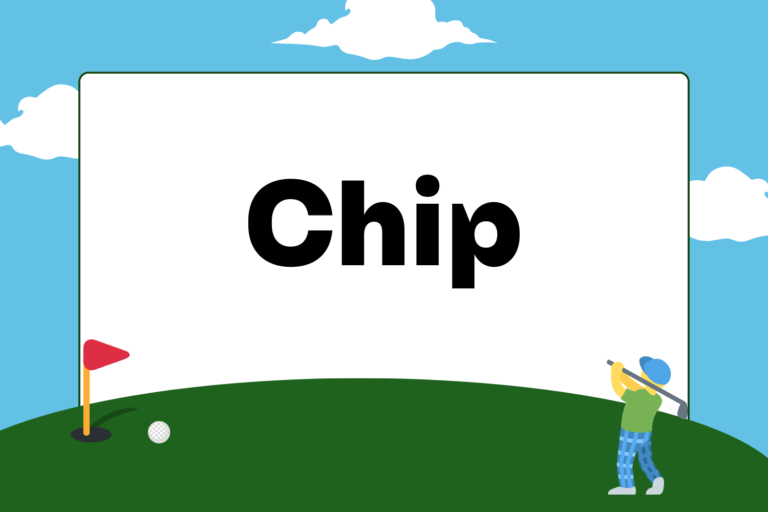You hear it all the time—golf is a game of strategy. But when you’re out on the course, you notice that you don’t really strategize all that much. You’re a dead-aim kind of golfer, and you blame all of your double and triple-bogeys on poorly executed shots and bad breaks. Sure, hitting bad shots and having some bad luck are certainly parts of your scoring problems, but unless you know your strengths and weaknesses as a golfer and assess the risks and rewards on the golf course, you’ll never score as well as you’re capable of scoring.
And that’s what course management is all about: knowing enough about your game and the golf course to figure out the best mode of attack. It’s an attention to the details of the hole’s layout, a level of concentration and consideration on every shot, and the intent to make your next shot easier than your current shot.
Seeing as how course management is more of a mental skill than a step-by-step process, this guide will focus on a number of hypothetical examples of moments on the golf course in which course management comes into play.
Example One: Off the Tee
Let’s think about a right-handed golfer who has a tendency to slice the ball with his driver. He’s teeing up on a long par-five, and knows that in order to have any real chance at scoring a birdie, he needs to hit a long drive off the tee. On this particular hole, light rough lines the fairway to the left, and along the right side is a fence separating the course from expensive houses with easily shattered windows—out of bounds.
Here are some of the mistakes amateur golfers in his position might make as they step up to the tee box on this hole:
- Way too many golfers see the words “Par-five” and instantly grab the driver. If you’re not consistent with your driver, if you have a tendency to slice it, why wouldn’t you hesitate to use it on a hole where there’s big trouble to the right? A birdie may be a tough goal without a long drive, but it’s impossible if you hit it out of bounds on your tee shot. Maybe a fairway wood, a hybrid club, or a long iron might be the smarter choice for a golfer struggling with his driver.
- Another common mistake a golfer might make here is over-swinging. Let’s say the golfer has thought about the risks and rewards of hitting his driver on this hole, and he’s decided (smartly) to put it back into the bag, opting instead to hit a high-lofted hybrid club he felt confident hitting on the range. Unfortunately, he’s still thinking about how long the hole is, and how long of a tee-shot he needs in order to reach the green in regulation, so he swings the hybrid as hard as he can, only to ruin the whole point of choosing the safer route. Once he’s decided on playing it safe, he’s got to commit to that choice, and not try to get the best of both worlds.
- If the golfer decides that he’s feeling lucky and wants to hit the driver anyway, another easy mistake he might make is aiming straight down the middle of the fairway. The better thing to do in this case would be to aim left of the fairway; if he hits a straight drive, the worst that could happen is a lie in the rough, but if he hits a small slice like he’s often prone to doing, his ball might fade nicely back into the fairway. With his tendencies, aiming straight down the middle is an all-or-nothing strategy, and all too often, the “nothing” wins.
Example Two: Approach Shot
For this example, let’s say a golfer’s tee shot on a par-four has left her about 140 yards from the pin, which is set at the back of a large green. Behind the pin and the green, there is a big downslope that leads to a deep bunker. The golfer knows that a shot from that bunker would be extremely difficult (up the face of the hill to a pin location with no green to work with) and hitting into that bunker would probably ensure at least a bogey. Her options are:
- Hitting her 7-iron, which would fly to the back of the green, near the pin. Hopefully the ball would get some backspin and stop quickly once it lands.
- Hitting her 8-iron, which would, even if struck perfectly, land in the middle of the large green. Probably it would come up even shorter, toward the front of the green, leaving her a long birdie putt.
Good course management here would be for her to go with option number two. If she hit both shots perfectly, option number one would give her the shorter, easier birdie putt. However, if she has the opportunity to get a practically guaranteed green in regulation with option number two, she should take it. In option number one, all it would take for her potential birdie to turn into a bogey is a forward bounce off the green and into that bunker. Even with a good shot out of the tough bunker, she’d still be facing a difficult par putt. She knows that there are “birdie holes” coming up in the round that are more suited to her game, and that a two-putt par here is a great score. Option two is the right choice for her.
Example Three: Trouble Shot
One crucial aspect of good course management is knowing when to cut your losses. A good example: a golfer hits a tee shot on a short par-four that hooks left into the woods. After an anxiety-provoking couple of minutes searching through the tree roots and fallen leaves, he finds his ball nestled in the middle of the forest. Again, there are two options:
- Knocking the ball out sideways back into the fairway, essentially accepting a one stroke penalty, and playing his third shot into the green.
- Taking a fairway wood and hitting a stinger-type knockdown shot through a small gap in the branches. The fairway is hard enough so that the ball could potentially run all the way up to the green, leaving him a birdie possibility.
Now, a stubborn, cocky golfer might choose option two just on principle. But the golfer who’s employing good course management—the golfer who is trying to score his best possible score—will go with option number one. Remember, an underlying principle of good course management is trying to leave your next shot in a better spot than your current shot. Although there’s a small chance that option number two has the most potential benefit, it’s obvious that the smarter choice is option one, which will definitely leave him an easier shot than his current one.
Example Four: Going For It
Although playing it safe often aligns itself with good course management, the best practitioners of course management also know when to be aggressive. An example:
Let’s say a golfer is standing over his second shot on a par-five that doglegs to the right. He’s hit a perfect drive down the right side of the fairway, leaving about 190 yards to the green, which is the perfect distance for his 4-iron. In order to hit on the green in two and have an eagle putt, he’s got to hit his second shot over a lake. However, if he wants to play it safe, he can lay up to the left of the lake, and have an easy pitch for his third shot.
This golfer happens to love his long irons, and his 4-iron is his absolute favorite. Only once in every twenty shots he hits it a bit thin and comes up short, which in this case, would land him in the lake.
This guide says he should go for it. Eagle putts are rare for most golfers, so if you’re in a position to hit your favorite shot onto the green for a chance at one, that’s your moment to be confident and aggressive. A golfer with strong course management skills knows how to identify opportunities for his skills to shine.
Learning Your Game, Learning the Course
Again, if you want to score your best, you’ve got to not only practice putting, chipping, and full shots; you’ve got to know your game inside and out. Be honest with yourself about your strong points and your limitations. Study the layout of each hole before you tee it up, and identify which of your strengths matches up to the weaknesses of the golf course. Put strategy back into your golf game, and you’ll see your handicap drop.





